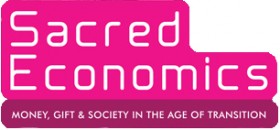"If you want a convincing account of just how deep the shift in our new axial age is and must be, look no further than this brilliant book by Charles Eisenstein, one of the deepest integrative thinkers active today."
- Michel Bauwens, founder of the P2P Foundation
Above: Sacred Economics (2012) - short film by Ian MacKenzie, a teaser on the ideas of Charles Eisenstein and the return of the gift.
About the Book
Sacred Economics traces the history of money from ancient gift economies to modern capitalism, revealing how the money system has contributed to alienation, competition, and scarcity, destroyed community, and necessitated endless growth.
Today, these trends have reached their extreme - but in the wake of their collapse, we may find great opportunity to transition to a more connected, ecological, and sustainable way of being.
Spread the word
Tweet
